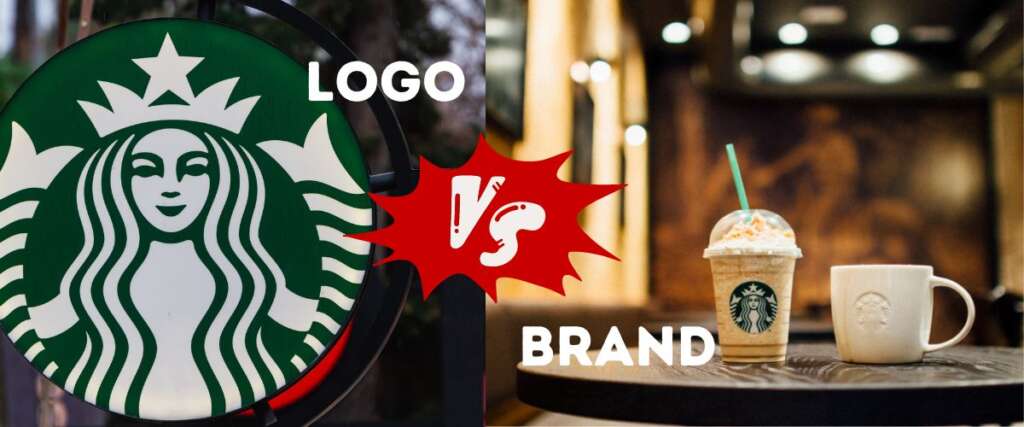A Comprehensive Guide to Defining, Creating, and Leveraging Your Logo and Brand for Success
Introduction
A logo and a brand are two essential components of a business’s identity. While they are often used interchangeably, they have distinct meanings and serve different purposes. In this article, we’ll explore the differences between a logo and a brand, explaining their individual roles and how they work together to create a cohesive and memorable impression on your target audience.
I. What is a Logo?
A logo is a visual representation of your business, typically consisting of a symbol, icon, or stylized text. It serves as a recognizable and memorable graphic element that helps customers identify your company and distinguish it from competitors. A well-designed logo should be unique, simple, versatile, and easily adaptable across various media and formats.
II. What is a Brand?
A brand encompasses the entire perception and experience customers have with your business. It includes not only visual elements like your logo, color palette, and typography but also intangible factors such as your company’s values, mission, voice, and personality. Your brand is the sum of all these elements, shaping how your business is perceived by customers and influencing their emotions, trust, and loyalty.
III. The Role of a Logo in Your Brand Identity
While your logo is just one aspect of your brand, it plays a critical role in your brand identity by:
- Creating a visual anchor: Your logo serves as a focal point for your brand, giving customers a recognizable and memorable symbol to associate with your business.
- Enhancing brand recognition: A well-designed logo can help customers instantly identify your business and distinguish it from competitors.
- Conveying key brand elements: Your logo should communicate essential aspects of your brand, such as your industry, values, or unique selling proposition, at a glance.
IV. The Role of a Brand in Your Business Strategy
Your brand plays a pivotal role in your overall business strategy by:
- Shaping customer perception: A strong brand helps shape how customers perceive your business, influencing their emotions, trust, and loyalty.
- Differentiating from competitors: A well-defined brand sets your business apart from competitors, highlighting your unique offerings and value proposition.
- Guiding marketing and communication: Your brand serves as a foundation for all your marketing and communication efforts, ensuring a consistent message and tone across all channels.
V. How to Create a Strong Logo and Brand
To create a strong logo and brand, consider the following steps:
- Define your brand’s core elements: Identify your mission, values, target audience, and unique selling proposition to inform your brand strategy and visual identity.
- Design a memorable logo: Create a unique, simple, and versatile logo that visually communicates your brand’s essence and is easily adaptable across various media.
- Develop a cohesive brand identity: Establish a consistent visual identity by selecting complementary colors, typography, and imagery that align with your brand’s personality and values.
- Craft a consistent brand voice: Communicate your brand message consistently across all channels, using a tone and style that reflects your brand’s personality and resonates with your target audience.
VI. Leveraging Your Logo and Brand for Business Success
To leverage your logo and brand for business success:
- Ensure brand consistency: Maintain consistent brand identity and voice across all customer touchpoints, from your website and social media to packaging and advertising, to reinforce recognition and build trust.
- Engage in effective marketing: Use your brand’s core elements to guide your marketing strategies and campaigns, ensuring they align with your target audience’s values and preferences.
- Tell your brand story: Share your brand’s story, values, and mission with your audience to create an emotional connection and foster customer loyalty.
- Monitor and evolve your brand: Regularly assess your brand’s performance, gather customer feedback, and make necessary adjustments to stay relevant and responsive to market trends and customer needs.
Conclusion
Understanding the distinction between a logo and a brand is crucial for businesses looking to create a strong and memorable identity. While a logo serves as a visual representation of your company, your brand encompasses the entire customer experience and perception of your business. By crafting a compelling logo and building a cohesive brand, you can shape customer perceptions, differentiate from competitors, and ultimately, achieve long-term success. Focus on maintaining brand consistency, engaging in effective marketing, and continuously evolving your brand in response to market trends and customer feedback to leverage your logo and brand for sustained growth.




